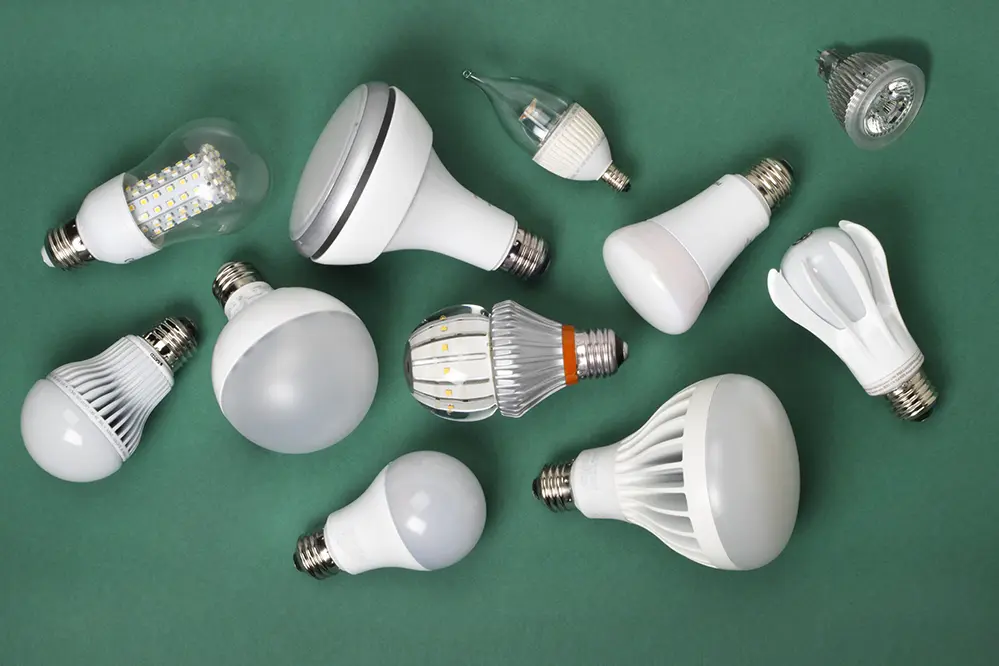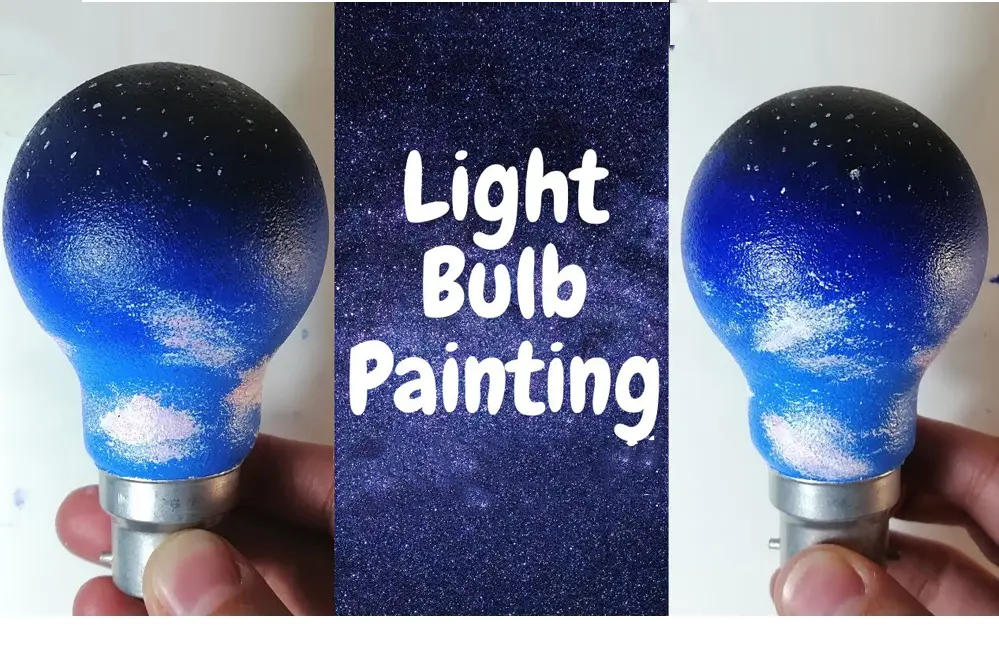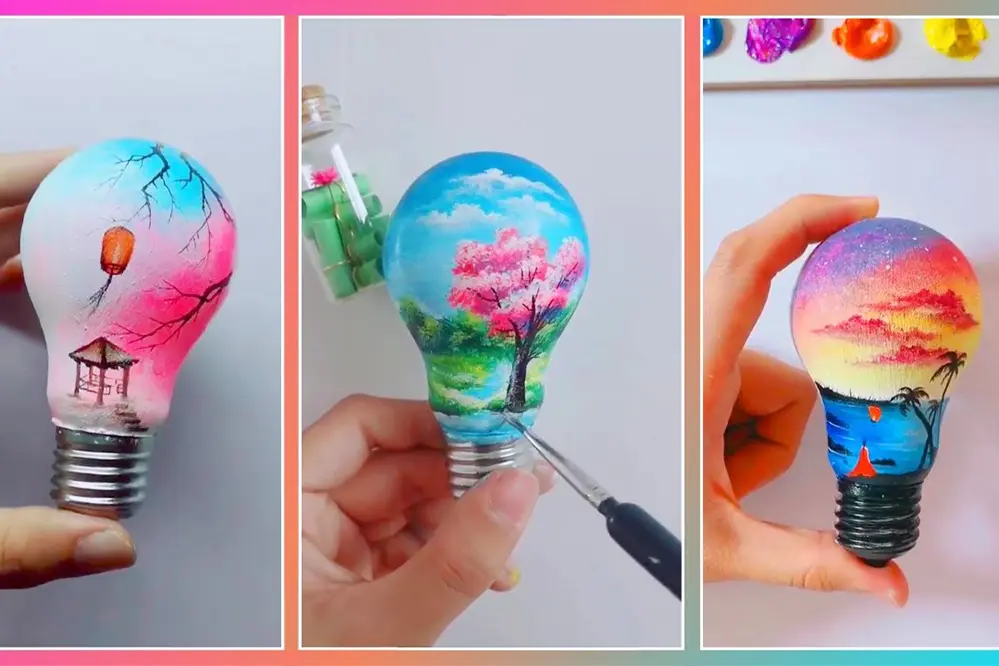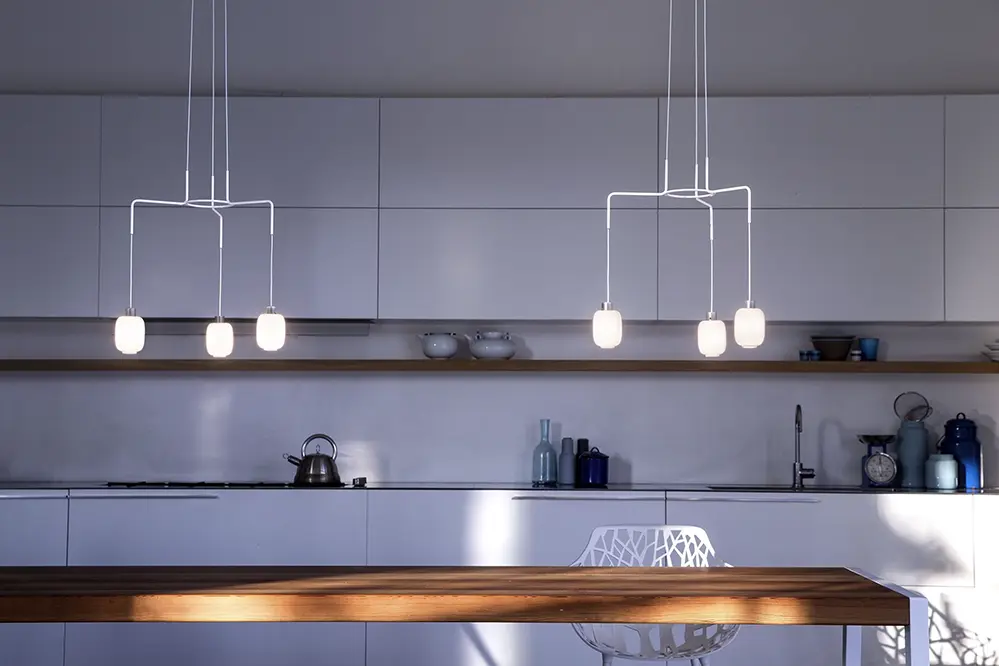Are you ready to transform your lighting into a canvas of creativity? With the right guidance, painting LED light bulbs can be a safe and rewarding project. Let us guide you through the process with confidence and expertise.
Painting LED light bulbs is possible, but it requires using heat-resistant, non-toxic paints and following safety precautions to maintain bulb functionality and safety.
Eager to learn more about how to safely and effectively paint your LED bulbs? Continue reading for a comprehensive guide, including step-by-step instructions, safety tips, and creative ideas to inspire your next project.
Understanding LED Light Bulbs

LED light bulbs are marvels of modern technology, revolutionizing how we illuminate our world.
In recent years, these luminous powerhouses have offered exceptional energy efficiency, outshining conventional lighting solutions and vastly reducing energy consumption while providing impressive longevity.
Yes, it’s no small feat that LED technology has grown integral to a sustainable future, offering a palette of options to brighten our spaces with less impact on the planet.
Shining a light on the innovation they represent, LED lightbulbs also provide flexibility that’s far from the 3 R’s of incandescent bulbs’ reduce, reuse, and recycle, creating unprecedented opportunities for creative customization.
Their exceptional versatility makes them perfect for unconventional uses like painting, enhancing ambient settings with customized accents.
Why Consider Painting LED Bulbs?
An opportunity to inject personality into lighting exists.
Painting LED light bulbs can intrigue the artistically inclined. One could easily elevate the plain appearance of bulbs by infusing them with bespoke expressions of personal creativity, resulting in an inviting ambiance tailored to one’s taste. Consequently, painting can be seen as a transformative act, casting new dimensions of light and shadow.
The allure of personalized designs lies in their unique appeal.
A creative flourish can reshape any space – LED bulbs painted with expertly chosen colors can transform mundane surroundings into a warm, visually captivating refuge. The act of painting LEDs extends beyond mere aesthetics; it can embody forward-thinking design, blending function with flair.
In the modern world, embracing imagination propels sustainable innovation in interior spaces, merging practicality with the artful splendor. Thus, personalizing your LED bulbs not only reaffirms your stylistic vision but also illuminates your environment in a distinctively personal light.
Safety Precautions Before Painting
Before embarking on this artistic journey, consider the importance of certain safety precautions to ensure the integrity of the project.
Ensure the light bulb is unplugged to prevent any electrical hazards.
Avoid using flammable or toxic paints, as these can pose a risk of a fire hazard or result in the emission of harmful fumes when the bulb is in use. Opt instead for a heat-resistant, non-toxic paint to protect both your creation and your health.
Additionally, allow sufficient drying time for the paint, ideally 24 hours, to prevent any softening or melting due to heat exposure. Proper preparation, including covering your workspace and wearing protective gear, keeps your painting endeavor both enjoyable and safe. With these measures in place, you can confidently transform your LED light bulbs into personalized works of art.
Materials Needed for Painting
To embark on the exciting journey of painting LED light bulbs, you will need specific materials that will set the tone for successful creativity. A specialized glass paint or heat-resistant acrylic paint is recommended to ensure durability.
You will also require soft brushes tailored for glass painting.
Begin by gathering painter’s tape, newspaper, or a drop cloth. These materials will help protect surfaces from unwanted paint splashes, and maintain a tidy environment as you work.
To achieve precise designs and a flawless finish, consider using fine-tip paintbrushes or quality foam brushes. They ensure that every stroke captures the intricate charm you envision. A cleaning solution, suitable for the materials of the LED bulb, is also imperative to remove any dust or residue before painting commences. In the spirit of creativity and conscientious preparation, these materials affirm your dedication to craftsmanship and quality, promising an inspiring and uniquely vibrant outcome.
Types of Paint for LED Bulbs
To achieve splendid results with your LED bulb painting project, selecting the right paint is paramount. Not only must the paint adhere well to the bulb’s surface, but it should also withstand the mild heat emitted by LEDs.
Specialized glass paint often emerges as the preferred choice among artisans.
This type of paint is renowned for its superior adhesion properties and its vibrant color options. Additionally, it is specifically formulated to manage the subtle heat management of LED bulbs, ensuring prolonged vibrancy and adhesion. This is your go-to option for a splash of dynamic color with confidence.
Moreover, heat-resistant acrylic paint offers a versatile alternative. Its robust formulation endures the gentle warmth of an LED bulb while allowing the artist to explore a vast spectrum of creative possibilities. Whether crafting intricate patterns or sleek, even coats of color, your mastery can flourish without the worry of peeling or fading. Dive into this creative endeavor with eagerness, knowing your illuminating masterpiece awaits with these appropriate paint choices.
Can You Paint LED Bulbs Safely?

Yes, it’s indeed possible and, with a measure of meticulous preparation, quite safe. Employing the right paints safeguards both the bulb’s performance and your creative aspirations, allowing your visions to shine brilliantly without compromising functionality. Prepping the bulb by cleaning its surface and avoiding excessive layering will maximize adherence and aesthetic appeal.
By carefully selecting and applying a “heat-resistant” paint, such as specialized glass or acrylic options, you mitigate the risk of overheating. These adept in managing the modest thermal output of LEDs ensure that the brilliance of your colors remains unaffected. It’s about embracing the adventure with informed creativity, transforming ordinary illumination into a testament of innovative expression.
Risks of Painting LED Bulbs
Painting LED light bulbs may result in a constraint on heat dissipation, a critical aspect of their efficient functioning. Improper heat management can lead to a significant reduction in lifespan.
Moreover, toy with the wrong paint and you risk causing a “thermal blanket.” This effect can lead to chipping of the paint, alteration in color output, and possible handling hazards.
Using incorrect paint might reduce light output by up to 30%, impacting energy efficiency and ambiance.
Thus, as you embark on this artistic journey, it’s imperative to consider the type of paint you are using—opting for heat-resistant options often recommended for such projects, especially if you find yourself asking, ‘Can you paint LED light bulbs?’ This consideration not only maximizes safety but ensures your artistic creation illuminates safely and vibrantly for the long haul.
Tips for Safe Painting
When painting LED light bulbs, prioritize safety by selecting appropriate materials and methods, such as dimming capabilities, ensuring the bulb continues to operate optimally without undue risk.
Carefully choose heat-resistant glass paint known for its durability.
Ensure your workspace is well-ventilated and free of flammable materials to create a safe environment for painting. Maintaining a clutter-free area not only preserves air quality but significantly reduces potential accidents or hazards.
Finally, apply the paint sparingly and evenly to avoid excessive coating that might trap heat. This practice safeguards the bulb’s performance, sustains its lifespan, and achieves the desired aesthetic finish. Remember, a little patience with even strokes can yield stunning results that reflect your creative spirit without compromising safety.
Step-by-Step Painting Process
Begin by gathering materials like heat-resistant glass paint, painter’s tape, brushes, and a clean work area. This foundational preparation positions your project for success, enhancing both safety and artfulness.
Next, clean your chosen LED bulb carefully to ensure the paint adheres without issue; apply painter’s tape to mask any areas you wish to keep paint-free.
Apply light, even coats of paint, allowing each layer to dry fully, fortifying both aesthetic brilliance and functional durability.
Preparing the Bulb
Preparing the LED light bulb is a crucial step before embarking on your lightbulb painting adventure.
Begin by ensuring the bulb is completely cool to touch, as painting a warm bulb can affect paint adhesion and safety. Disconnecting the bulb from any power source is essential to prevent electric hazards.
Consider using a soft, lint-free cloth to clean the bulb’s surface meticulously, as dirt and grime can impede the paint’s ability to bond. This cleaning step ensures a smooth and flawless finish.
Next, decide on the areas of the bulb you wish to remain unpainted. Apply painter’s tape to these sections. This careful masking will help achieve clean, sharp lines and maintain the bulb’s light output where needed.
Finally, find a stable work area with good lighting and ventilation to carry out your project effectively.
Applying the Paint
With your LED bulb prepped, you’re ready to embark on the exciting journey of painting your bulb creatively.
- Use acrylic paint: Opt for acrylics as they adhere well and offer a range of vibrant colors.
- Apply light layers: Begin with thin layers to prevent dripping; multiple layers ensure even coverage.
- Allow drying time: Patience is key, allowing each coat to dry completely before the next application.
- Protective finish coat: Consider a clear sealant to add durability to your colorful design.
By applying these tips, you ensure a beautiful and lasting finish for your LED bulb project.
Embrace creativity confidently, knowing your efforts will illuminate your space with personal style.
Drying and Curing Time
Drying time varies based on paint type, with acrylics typically requiring up to thirty minutes for each coat.
In practice, it is prudent to wait a minimum of an hour between coats to ensure optimal bonding, allowing each layer to dry thoroughly before proceeding. This careful approach not only aids in maintaining the vibrancy of the paint but also ensures the durability of the final design against potential wear.
Depending on environmental factors such as humidity and temperature, total curing time may extend for several days. By being mindful of these variables, you can expect your painted LED bulb to achieve maximum steadfastness and finish quality.
Moreover, for those prioritizing resilience, leaving the bulb undisturbed for around a week allows the paint to fully cure. This extended period strengthens adherence and offers an impressive finish that withstands the test of time, transforming your artistic endeavors into enduring, brilliant lighting expressions.
Best Practices for Painted LED Bulbs
When diving into the creative endeavor of painting LED light bulbs, preparation is key. Ensuring the bulb’s surface is clean and dry makes all the difference in application success.
To begin, select non-toxic, heat-resistant paints specifically suitable for use on LEDs. Acrylic paints often receive high marks for their vibrant finish and adherence capabilities, making them an excellent choice for this project.
Carefully apply thin layers of paint to maximize control and consistency. This method helps maintain balance in light diffusion and guarantees an even distribution of color without obstructing illumination.
Emphasize precision by using fine brushes or painting tools that offer enhanced control. This attention to detail, coupled with patience, ensures that artistry is neatly reflected and the bulb’s functionality is preserved.
Finally, extend this same care post-painting to protect your masterpiece, allowing the surface adequate time to settle before usage.
Color Effects on Light Output
When you paint an LED light bulb, the transformative power of color becomes readily apparent, and you can alter the atmosphere of any space, leaving you to wonder, ‘can you paint LED light bulbs in a way that maintains their performance and aesthetics?’
Colors have inherent qualities that can significantly influence light output.
Warm colors like red and orange can create a cozy and inviting ambiance, while cooler tones such as blue and green offer a sense of tranquility, enhancing your well-being and mood.
This manipulation of color not only enables you to fine-tune the aura of the room but also acts as a creative outlet that allows for personal expression. By selecting specific colors, you invite an engaging dialogue between light and art that enhances your environment’s aesthetics and functionality. Whether you aim to “soothe” or invigorate the senses, this approach to painting LED light bulbs empowers you to express and elicit emotions through illumination.
Maintenance of Painted Bulbs
Ensuring the longevity of your painted LED light bulbs requires a proactive approach and attention to detail.
Primarily, avoid using abrasive materials or chemicals when cleaning these artistic creations, as they could damage the paint and diminish your intended visual effect. Instead, gently dust the bulbs with a soft cloth to maintain their luster and unique appearance. This gentle approach preserves both the painted surface and the aesthetics you have carefully curated.
Regular inspections can help identify any areas where the paint might be peeling or fading. If imperfections appear, address them promptly by touching up the paint, using the same technique and color originally applied to ensure a seamless restoration of your design.
Moreover, proper ventilation and positioning of these bulbs ensure their brilliance remains unchanged by excessive heat that may jeopardize the applied layer. By appreciating the subtleties involved in their upkeep, you contribute to a sustainable practice that marries creativity with longevity, transforming your living space into a testament to innovation and resilience.
Alternatives to Painting LED Bulbs

In the inspiring world of design, limitless options await.
If your aim is to change the hue of LED lighting without paint, consider using colored or frosted bulb covers. These nifty covers easily slip over your bulbs and offer an amazing spectrum of color possibilities, allowing you to reinvent the ambience of any space easily. Alternatively, seek out bulbs that are specifically designed for giving off soft, vibrant glows.
The use of smart LED bulbs allows unprecedented flexibility.
With the ability to adjust colors and brightness from the convenience of a smartphone app, they merge technology with creativity. These advanced lighting solutions enable you to explore a multitude of atmospheres, all while preserving the original integrity of the bulb.
Delving into the latest innovations such as smart lighting systems or ambient lighting installations, you can harness cutting-edge technology to craft transformative experiences, transcending standard illumination. These alternatives stand as a testament to the forward-thinking ethos of the latest year and beyond. Embrace this exciting era where creativity and technology intertwine, uncovering paths toward sustainable and dynamic lighting solutions.
Frequently Asked Questions about Painting LED Bulbs
Is it safe to paint LED bulbs?
Painting LED light bulbs can be done.
Venturing into this creative project opens a world of personalized illumination. The essential concern is ensuring that the paint chosen is safe and doesn’t compromise the bulb’s performance. Using high-temperature tolerant paints specifically designed for bulbs assures that the functionality remains intact while transforming the appearance beautifully.
Always prioritize using heat-resistant paints.
Applying these types of paints reduces potential heat build-up, preserving the bulb’s longevity. When the paints are heat-resistant, they allow the LEDs to operate efficiently without a risk of overheating, thus maintaining the light bulb’s energy-saving attributes.
A meticulous approach to painting ensures desirable results. Embrace an adventurous spirit as you explore uniquely colored LEDs to complement your decor while safeguarding their efficiency. With care and the right materials, this activity can yield illuminating and innovative outcomes.
What paint works best with LED lights?
When considering the artistry of customizing LED lights, selecting the appropriate paint is paramount. A world of creative opportunity opens up when one chooses the right tools for the job.
Acrylic-based paints emerge as one of the most suitable options for LED lighting projects. Their water-based composition allows for easy application and versatility, delivering vibrant results without compromising the light bulb’s functionality.
Importantly, these paints dry quickly and adhere well to the smooth surface of LED bulbs, making them an excellent choice for those seeking long-lasting effects. Ensuring that the paint is non-toxic and heat-resistant is crucial to maintaining both safety and durability.
For optimal results, it’s often advisable to apply a primer before painting, which enhances paint adhesion and helps achieve a uniform finish. Experimenting on a test surface can also fine-tune your technique and color selection.
Unleash your creativity with confidence, knowing the right paint can transform ordinary LED lights into extraordinary visual experiences.
What kind of paint can I use on a light bulb?
Consider non-toxic, heat-resistant paint options.
For painting light bulbs, it’s essential to use paint that can withstand heat and adhere well to glass surfaces. Acrylic-based enamel paints are often recommended due to their durability and resistance to higher temperatures. Additionally, ensure that the paint is specifically labeled as safe for glass to guarantee optimal performance and adhere to safety standards.
When applying, thin coats can yield better results.
Remember, the bulb’s heat generation could impact paint selection; thus, consult appropriate product guidelines. Excluding bulbs in enclosed fixtures is a wise move to prevent potential overheating.
Proper ventilation during the painting process and subsequent drying time is paramount. This ensures paint longevity and safety, allowing your creative venture to shine brilliantly. With diligence and careful selection, decorative light bulb painting can be both an illuminating and eye-catching endeavor.
Can you color LED light bulbs with Sharpie?
Transforming LED bulbs with color can be an intriguing endeavor, offering a creative avenue for personal expression.
Utilizing permanent markers, such as Sharpies, provides an uncomplicated method to achieve this customization. The process involves applying the marker ink directly onto the bulb’s surface. While this may initially seem like a straightforward technique, it’s crucial to remember that the pursuit of hue alteration should be undertaken with care. The electrical properties and integrity of the bulb are paramount, so it’s vital to avoid overcoating, which could inhibit heat dissipation and ultimately affect the bulb’s performance.
Additionally, using markers with a light touch can provide a gentle splash of color without compromising the bulb. If not handled prudently, the ink may fade or crack due to the bulb’s inherent heat output, thus diminishing the visual appeal over time.
Innovation within your living or workspace can indeed be achieved by experimenting with color on LED bulbs. However, it’s imperative to balance creativity with functionality. By exercising mindfulness and precision, you can enjoy both aesthetic enhancement and optimal bulb performance. Striking this balance ushers in a new era of custom illumination, enriching the ambiance of your space while maintaining safety and efficiency.
What paint works best?
When selecting the most suitable paint, consider your project’s purpose and the surface you’re working with—acrylic paints stand out for their versatility and durability across a multitude of applications. Acrylic paint is an exceptional choice, particularly for indoor projects, as its water-based formulation allows for easy clean-up and quick drying time.
In addition, its non-toxic qualities make it a safe option for most environments. Given its adherence capabilities, acrylic is a popular medium for artists and hobbyists alike. It’s particularly well-suited for ceramics, canvas, and other porous surfaces.
Moreover, latex paint offers robust performance in areas requiring resilience and flexibility, such as walls and ceilings. These paints are engineered for longevity and boast a smooth, even finish.
Alternatively, if tackling a more industrial-level task, enamel paints deliver high-gloss and enduring finish, ideal for metal surfaces. Designed to withstand harsh environmental elements, enamel can be applied to outdoor furniture or automotive parts with great success.
Before commencing any project, always consider any specific requirements or constraints that the surface or intended use may impose. With the right paint choice, you unlock the full potential of your project, ensuring brilliant, lasting results that satisfy your visionary standards.
Conclusion
Painting LED light bulbs is indeed possible, provided you carefully consider the materials and techniques to ensure both safety and functionality. This creative endeavor allows you to personalize your lighting solutions, blending artistic expression with technical insight. By selecting the right paints and methods, you can achieve optimal results that enhance your living spaces.
Beyond painting, exploring advanced lighting technologies such as smart bulbs can offer even greater customization. These technologies emphasize safety, efficiency, and a spectrum of dynamic features, allowing you to tailor your lighting to suit your needs and preferences. This path opens up a realm of possibilities for creating unique and adaptable environments.
In this ever-evolving landscape of lighting design, your ability to create enchanting atmospheres is limitless. Empower yourself with knowledge and creativity to transform your living spaces into personalized sanctuaries. By embracing both traditional and modern solutions, you can craft spaces that reflect your individuality and style.





